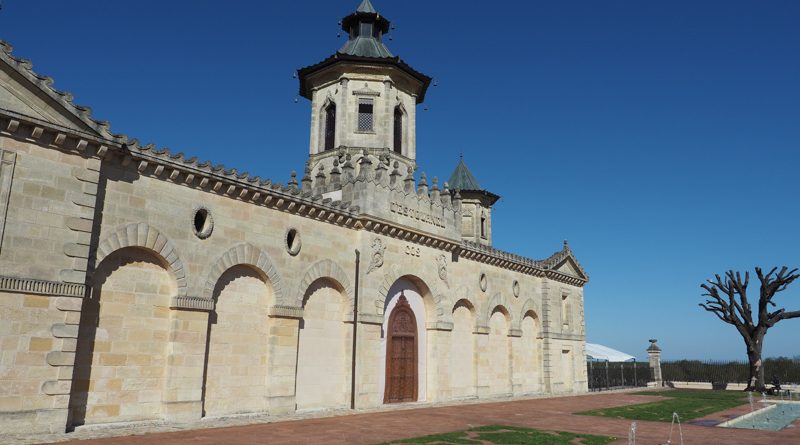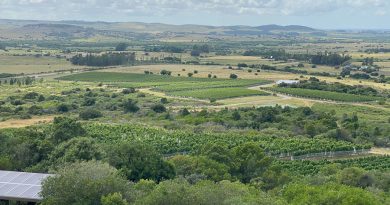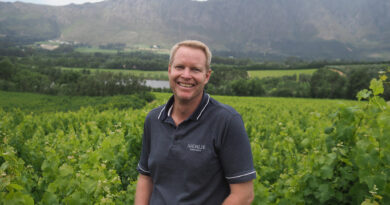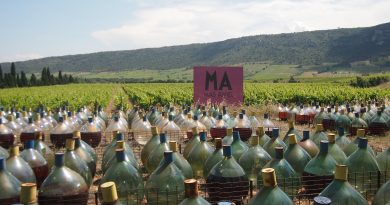Visiting Château Cos d’Estournel, St Estèphe: one of Bordeaux’s top estates
Since it was purchased by Michel Reybier in 2000, Cos d’Estournel has cemented its place as one of the top properties in the Médoc. The Château had changed hands just two years earlier, when Groupe Taillan, a Bordeaux négociant who already owned some top Châteaux, bought it from Bruno Prats who’d been running things for 28 years. It’s ranked as a second growth in the famous 1855 classification of the Médoc.
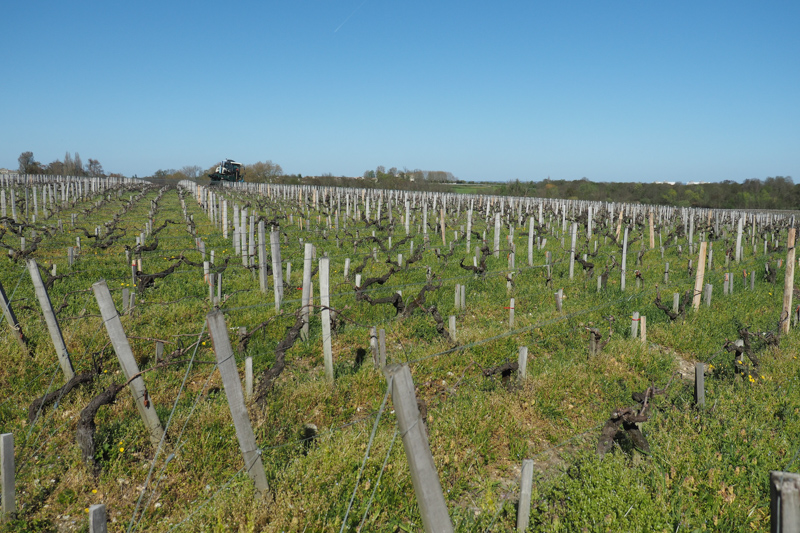
We visited Cos on a glorious March day. The sun was shining on the impressive, recently (2008) renovated building. This is one of the first properties you come to as you head northwards in the Médoc to the appellation of Saint-Estèphe. It sits on the eastern and southern border of a large gravel plateau.
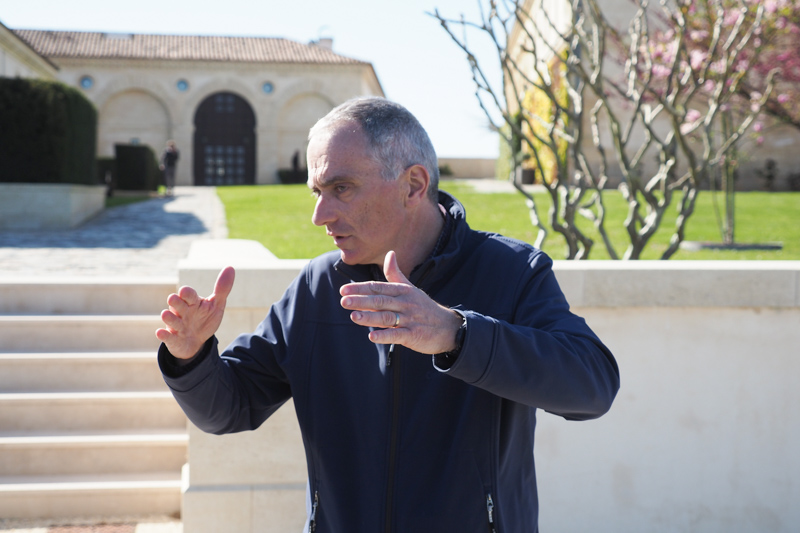
In the vineyard, they were busy working the soils. As with many top Bordeaux properties, viticulture has changed here over the last decades. Gone are the herbicides, and instead there’s a new, more soil-conscious regime.
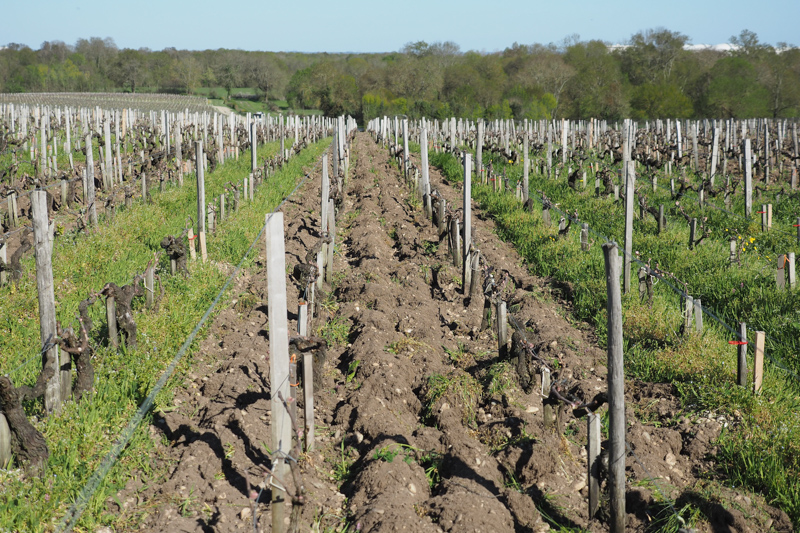
Vines are planted at high density, 0.95 m x 1.15 m apart. The planting density affects the amount of work that’s needed to work the vines. Technical director Dominique Arangoîts points out that one hectare at this density needs 10 km of tractor driving to work it. In the distant past the density was higher, between 20 and 30 000 plants per hectare, when the vines weren’t planted in rows on trellising, and were worked by hand.
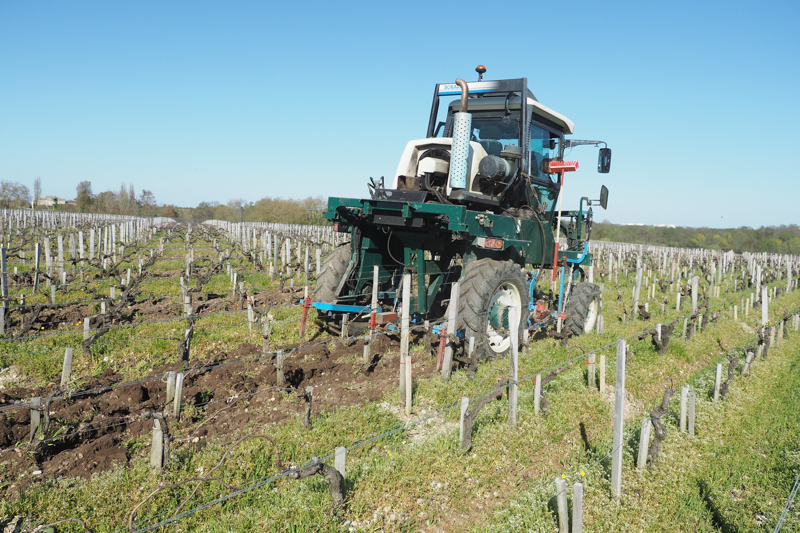
The 1 m row spacing became popular when people decided to work with horses. Suddenly, vines were planted in rows just big enough for horses to walk down. Then came tractors, which prompted wider row spacing. To work narrow 1 m rows mechanically requires over-vine tractors, which limits the height of the canopy somewhat.
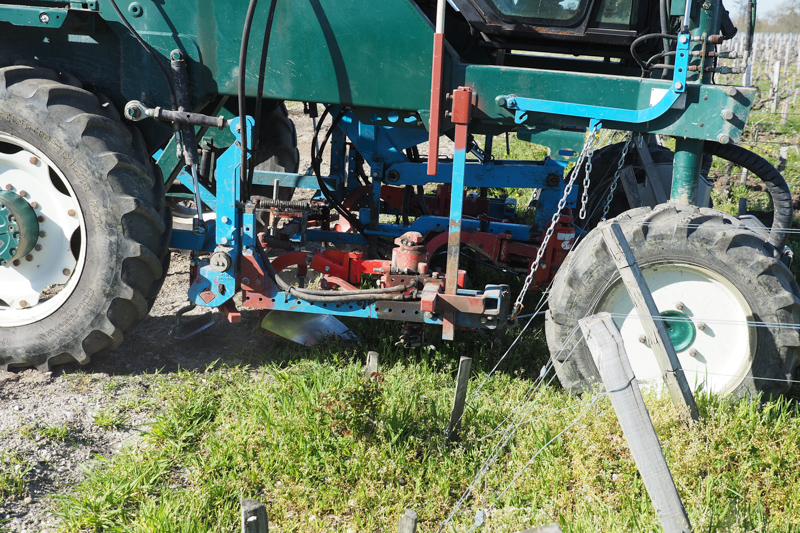
They don’t like having bare soil, so grow cover crops between the rows, such as barley. This also provides soil structure with the roots.
The terroir here in the northern Médoc consists of small gravel mounds separated by maraes, which are places where the river floods: they are a sort of wetland, and vines can’t be grown here. The top of the mounds consist of deep gravels, but around the edges the soils is clay/limestone. Just over half the vineyard at Cos is gravel. Anangoïts says that in 2004 theu did a big survey of the vineyard using resistivity to map the different sections. The 6-7 m of gravel sits on a bed of clay, which then sits on clay/limestone, which in turn sits on a bed of limestone. These layers have been mixed up a bit by erosion. In all, he says, there are 19 different soil types. ‘Each soil gives a special wine,’ says Arangoïts. ‘When we blend we have a unique blending effect. The synergies are incredible.’
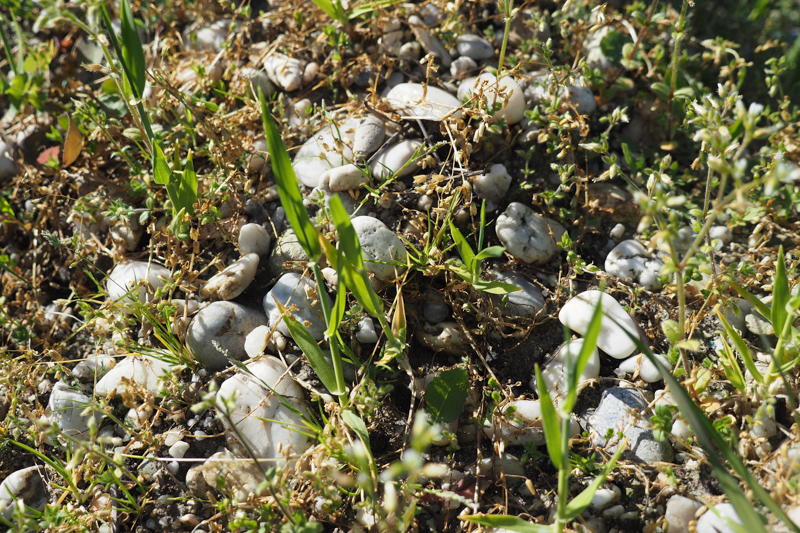
The estate is around 100 hectares, with 70 hectares under vine. They also have a 25 hectare estate in the north of the Médoc which they purchased in 2003 where they make whites. If you make white wines in the Médoc they are declassified twice: they are not labelled St Estephe, nor Médoc, but just Bordeaux Blanc. This gives a lot of latitude in terms of rules. This second estate is on a small hilltop close to the Gironde, where the river is 13 km wide (at Cos, it’s 7 km wide, and has a distinct influence on the climate).
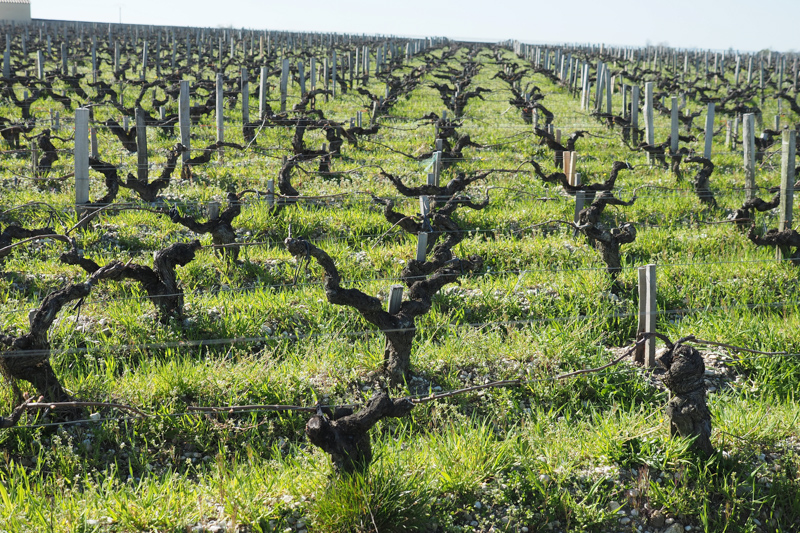
One of the blocks in the vineyard is now 104 years old. Four years ago they made a special wine from it, on its 100th birthday. Just two barrels were made.
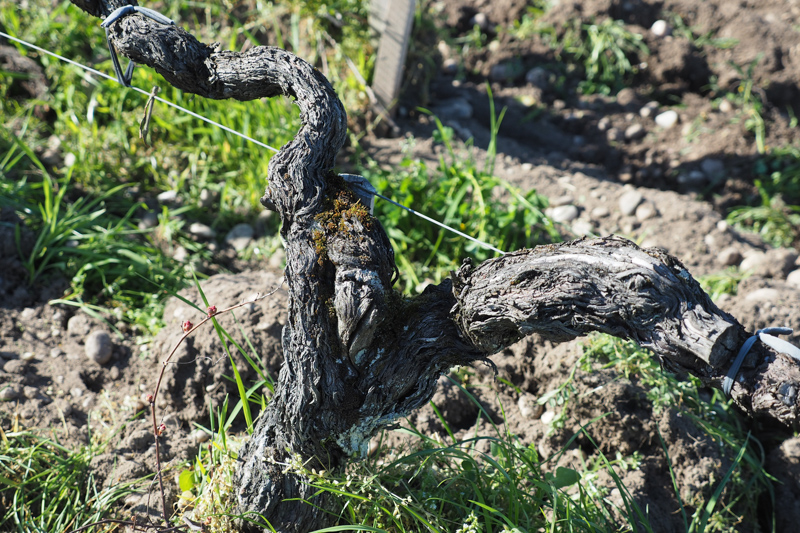
In 1831, when the Château was built, it was quite unique. Unlike most of its neighbours at the time, it was built as a winery, not as a place to live. In the past the grapes would have been destemmed to tank and fermented in open wooden vats. There was no pumping over so fermentation would have been managed by pigeage. This would have been carried on for around 100 years. During the 1930s Ginestet got rid of the wooden vats and made concrete tanks on each side of the winery, along the walls. Wines were fermented in these until 2004. In 2005/6/7, when Michel Reybier decided to build the new winery, they used a temporary facility, returning here in 2008.
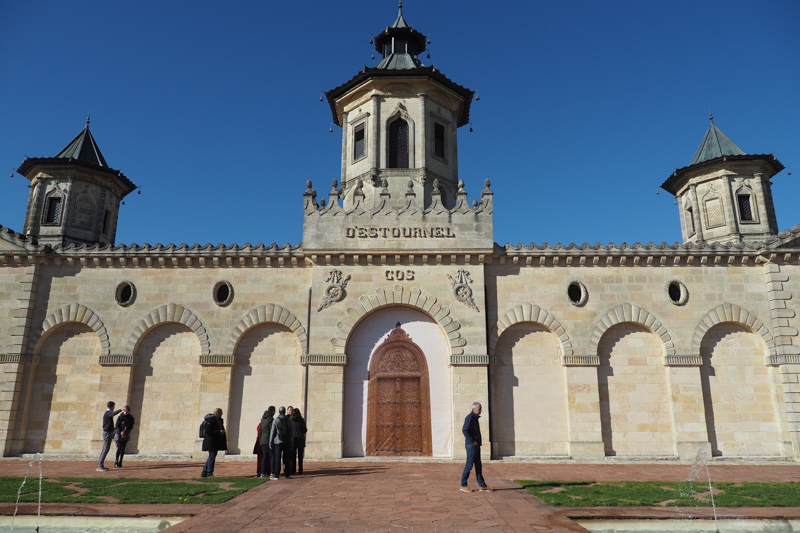
In the cellar, the effect of the renovations is clear. There are now no pumps at all here. Instead, grapes are moved using gravity. They also have new double-skin tanks that are tronconic shaped, allowing for better contact between skins and juice, and then when fermentation is finished, better draining. The double skin allows for more effective temperature control. These are original to Cos, based on a prototype they made in 2003.
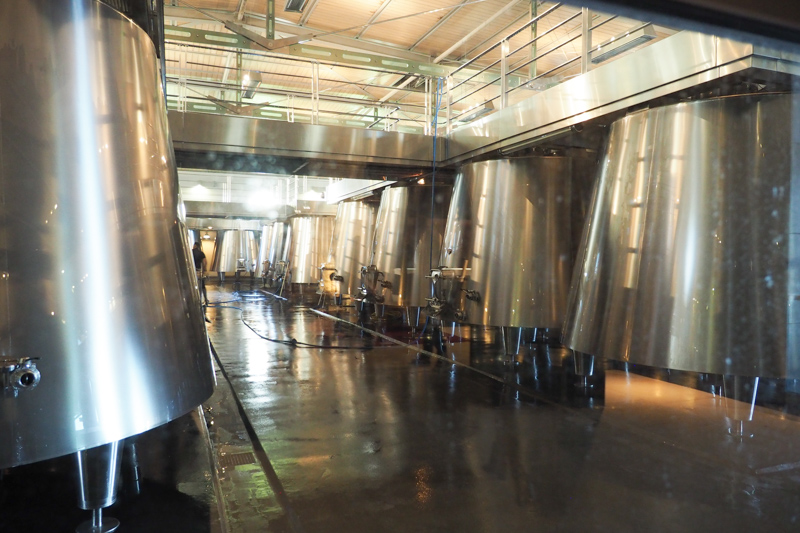
Grapes arrive through the window to the first floor, where they have a sorting table and destemmer. They then put the berries in small tanks/hoppers on wheels to transfer them to the fermenting tanks. There are electrically powered hoppers for moving grapes, each of which takes 1300 litres. It is very practical and safe.
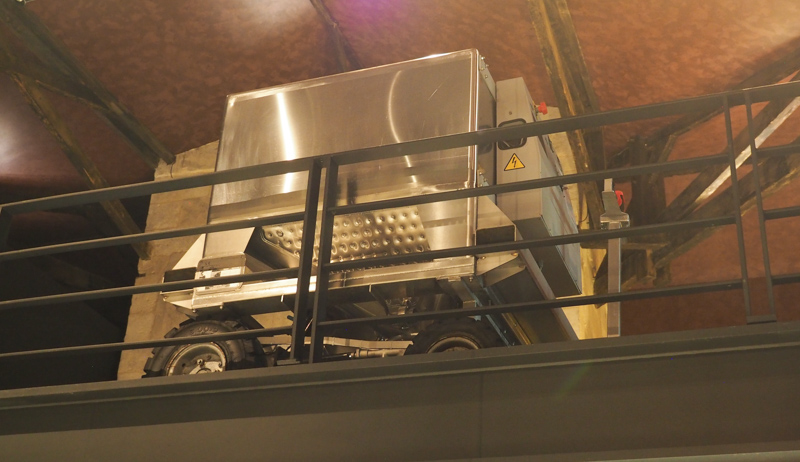
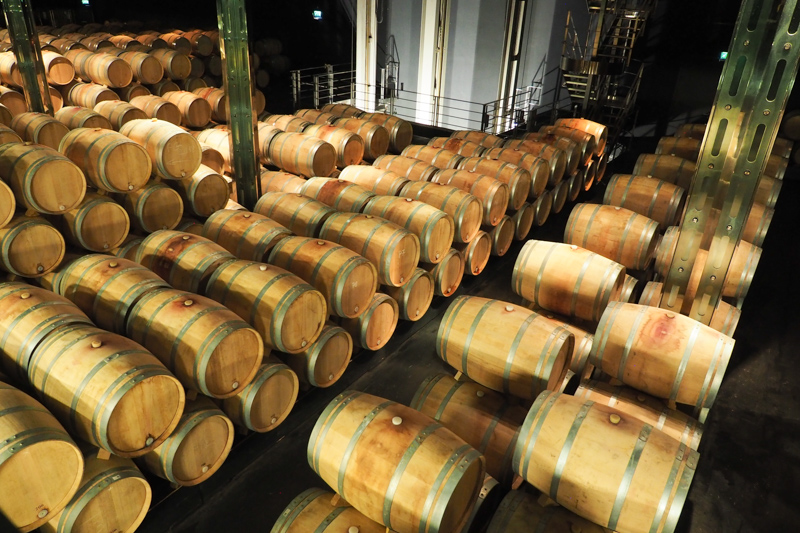
The new barrel cellar is naturally cool, and has some temperature and humidity and control. The air is renewed twice a night. Normally the Grand Vin is aged 14 or 15 months, and pagodes one year. Now they have 1200 barrels in here. The first wine is 50% new oak and the second wine is 20%.
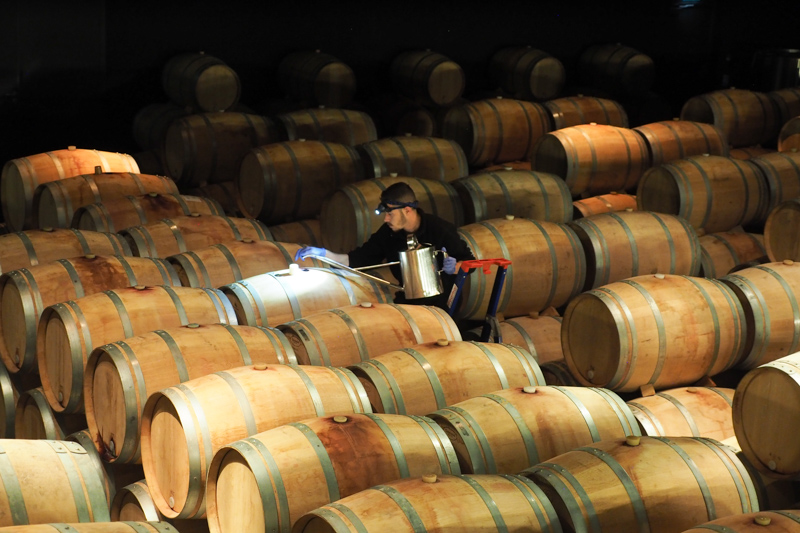
To move the wines they use huge lifts, which can take 100 hectolitre (10 000 litre) tanks.
Cos was founded by an interesting character called Louis Gaspard d’Estournel in 1791 when he inherited some vineyards here. He expanded the area under vine to 45 hectares, but didn’t live to see the property designated a second growth in the famous 1855 classification of the Médoc. He had a fascination with the east, and there’s a distinctive Indian influence to the architecture and style of the estate, with its elephants and pagodas. He was apparently known as the Maharajah of Saint-Estèphe.
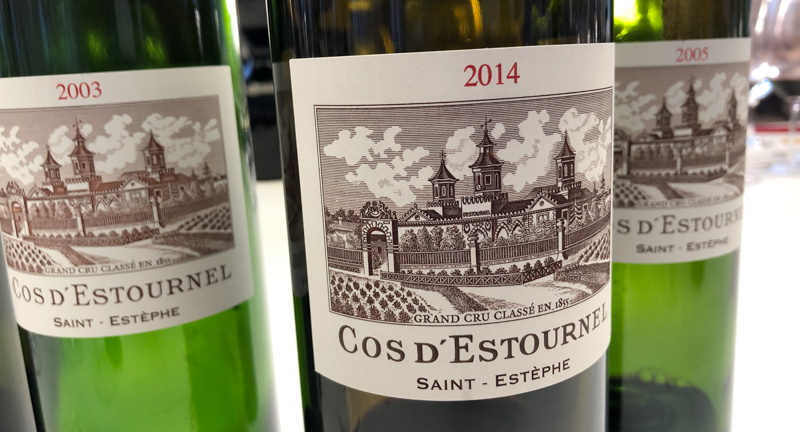
We are visiting in March, and in the following week they will be hosting 1500 people for primeurs. Increasingly the top properties are insisting that in order to taste, journalists and merchants must come to them, so they can manage the experience. This tasting marathon will take between two and three barrels of the Grand Vin, so it’s quite an investment.
But at the primeurs they will be showing the final blend as a barrel sample. This is because everything is blended in December, before putting the wine to barrel. They have so many soils they feel the wines need time to marry. They decide early what the final wine will be composed of.
THE WINES
Goulée by Cos d’Estournel 2018 Saint-Estèphe, Bordeaux, France
73% Merlot, 21% Cabernet Sauvignon, 6% Cabernet Franc. Very floral nose showing sweet black cherries and blackberries. Fresh palate with lovely pure, sweet alluring fruit. Very modern and polished. Seductive stuff with lots of potential. 92-94/100
Les Pagodes de Cos 2018 Saint-Estèphe, Bordeaux, France
54% Cabernet Sauvignon, 37% Merlot, 6% Petit Verdot, 3% Cabernet Franc. Floral, perfumed black cherry and blackberry nose. Very seductive. The palate is sweetly fruited and lush with nice black cherries and a touch of blackcurrant. Has a friendly fruit-forward personality. Some firm tannins under the seductive fruit. Pretty and expressive. 92-94/100
Château Cos d’Estournel 2018 Saint-Estèphe, Bordeaux, France
74% Cabernet Sauvignon, 23% Merlot, 2% Cabernet Franc, 1% Petit Verdot. Ripe, luxurious and seductive with bold, rich sweet blackcurrant and black cherry fruit. Nice density here: such a seductive wine, but structured with it. 94-96/100
Les Pagodes de Cos Blanc 2018 Bordeaux, France
93% Sauvignon Blanc, 7% Semillon. Very pretty and expressive with ripe citrus and pear fruit, a bit of pineapple and nice precision. Has good energy, with some richness in the mid-palate. 91-93/100
Château Cos d’Estournel Blanc 2018 Bordeaux, France
67% Sauvignon Blanc, 33% Semillon. Nice density with a freshness to the citrus and pear fruit palate. A touch of white peach and some spice. Has nutty notes with nice smoky grapefruit on the finish. 92-94/100
Goulée by Cos d’Estournel 2014 Saint-Estèphe, Bordeaux, France
Supple, ripe and quaffable with silky smooth blackberry and cherry fruit, as well as some gravelly depth. Has some nice grainy structure. Stylish stuff. 92/100
Les Pagodes de Cos 2014 Saint-Estèphe, Bordeaux, France
Sweetly aromatic with hints of roast meat and iodine. Concentrated and smooth with a softness to the palate, although it still shows depth and focus. Fine grained with a bit of chalkiness. Drinking very well now. 93/100
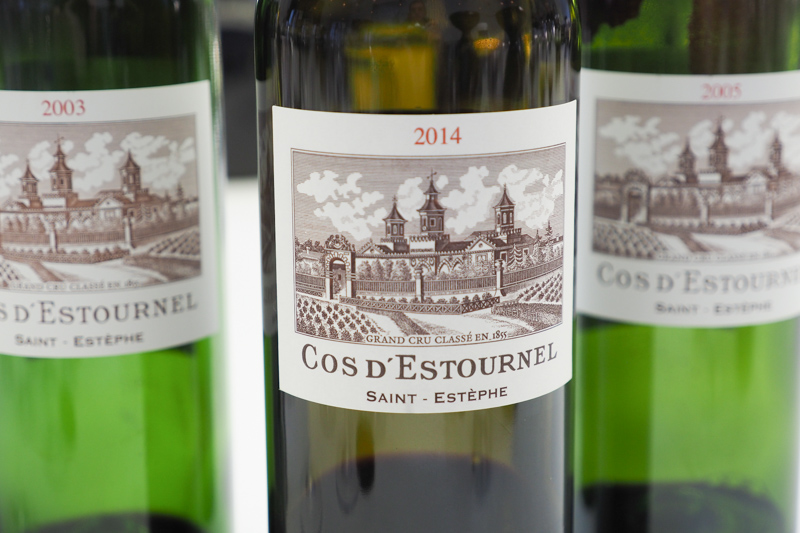
Château Cos d’Estournel 2014 Saint-Estèphe, Bordeaux, France
Ripe, dense and sweet with a lovely spicy edge to the palate, as well as sleek, ripe fruit and also some autumnal savoury complexity. Lively, with some grippy tannins on the finish. 94/100

Château Cos d’Estournel 2005 Saint-Estèphe, Bordeaux, France
There’s still quite a bit of structure here, but also some development, with notes of ash and gravel, as well as touches of earth and iodine. The fruit is smooth and ripe with blackberry and some roast meat. Harmonious and well into its drinking window, this will cruise into a mallow maturity, but will also retain its structural side. Warm, round finish. 95/100
Château Cos d’Estournel 2003 Saint-Estèphe, Bordeaux, France
They decided not to harvest too late after the hot summer, and the result is a wine that has a surprising amount of freshness, and a touch of mint. There are dried herbs alongside ripe, sweet black fruits and a smooth harmonious texture. Nice balance with the tannins firm but well integrated, and nice Ribena hints on the finish. 95/100
Château Cos d’Estournel Blanc 2014 Bordeaux, France
Very expressive with lively lime, spice and pineapple notes, as well as some mint. Concentrated and bold with lots of flavour, and a nutty finish. 92/100
Find these wines with wine-searcher.com

